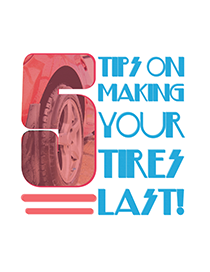DIY: How to Change a Tire
Nobody ever plans for a flat tire, but being prepared in case it becomes a reality is a good way to not be fearful. There is a common misconception that changing a tire is extremely difficult and only for those that are experienced car gurus, but anyone is capable of changing their own tire if they get a flat.
Here is how:
Be Safe and Smart: Be sure to find a safe location that is off the road. When you first notice that your tire is flat, don’t panic. It is important not to brake hard or turn the wheel aggressively. An important factor to mention is that flat ground is crucial for changing a tire. A parking lot is a great option, but if you do end up on the side of the road, make sure that you are paying attention to the people around you as well. Turning your hazard lights on is always a good idea.
Apply Parking Brake: This is important to be sure that your car will not roll at all while you are changing the tire.
Wheel Wedges: It is always a good idea to have wheel wedges with you just in case of a flat tire. This can also be sure that there is no movement in your car.
Before You Raise Your Vehicle: Be sure that you remove the hubcaps or wheel cover if your vehicle has those to cover the lug nuts. It is much easier to remove the hubcap before your vehicle is lifted. After, loosen the lug nuts before you put your car on the jacks, but it is best if you only loosen them ¼ turn to a ½ turn. Do not remove them completely.
Putting Your Car on Jacks: There is a designated spot for all vehicles for where to put the jack. If you are unsure, always check the vehicle manual. Putting the jack in the wrong place can damage your vehicle. Before you raise the jack, it is recommended to put a piece of 2×6 wood underneath the jack. This will help keep it balanced. When the jack is positioned properly, raise the flat tire to six inches above the ground.
Removing the Flat Tire: After the tire is raised, go ahead and remove the lug nuts. Now, you can gently remove the flat tire. It is best to hold onto the tread of the tire. Once the tire is off of the hub. You can either put the tire underneath the vehicle for added protection or safely off to the side.
Putting Your Spare Tire On: Line up the rim with the lug bolts. Push the spare tire on until the lug bolts show through. Then, put the lug nuts back on and tighten them all by hand as far as you can get them. You will tighten them all the way once the vehicle is back on the ground.
Lower Vehicle Until Tire is Partially on the Ground: You do not want the full weight of the vehicle back on the ground yet. Tighten the rest of the lug nuts with the wrench. Be sure to use your complete body weight to tighten the lug nuts.
Lower Vehicle the Rest of the Way: After the lug nuts are completely tightened, lower your vehicle all the way back to the ground. Remove the jack. Give the lug nuts one more tightening with the wrench to be sure they are tightened completely.
You Did It! – Now that you have your spare tire on, make sure to put all of your equipment and tire back into your vehicle. A quick tip is to always check the tire pressure in your spare as well before driving away.
Being able to effectively change a tire on your own can save you time and money. After you get that spare on, be sure to get to your local tire dealer to determine whether your old flat can be fixed or if you need a new tire.






